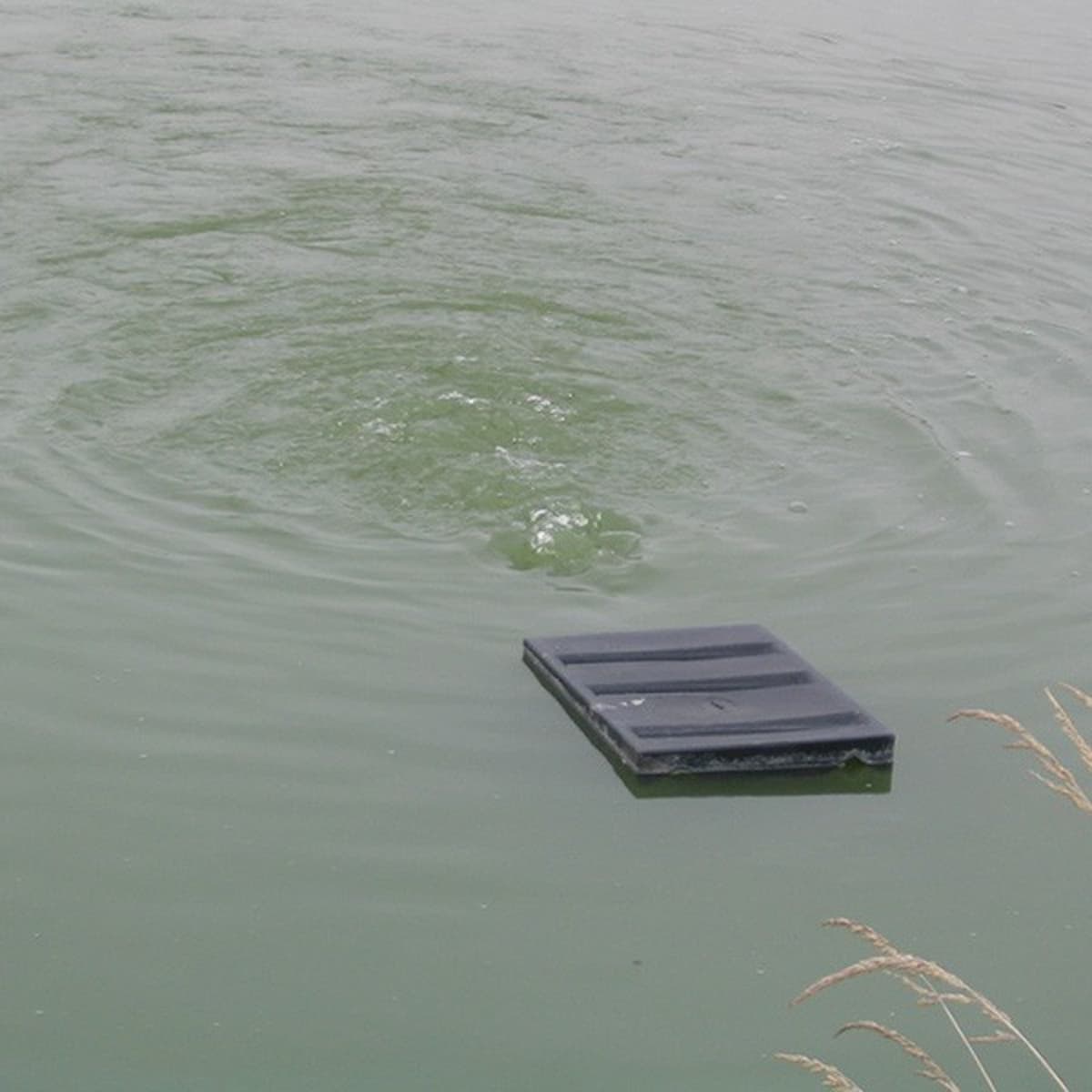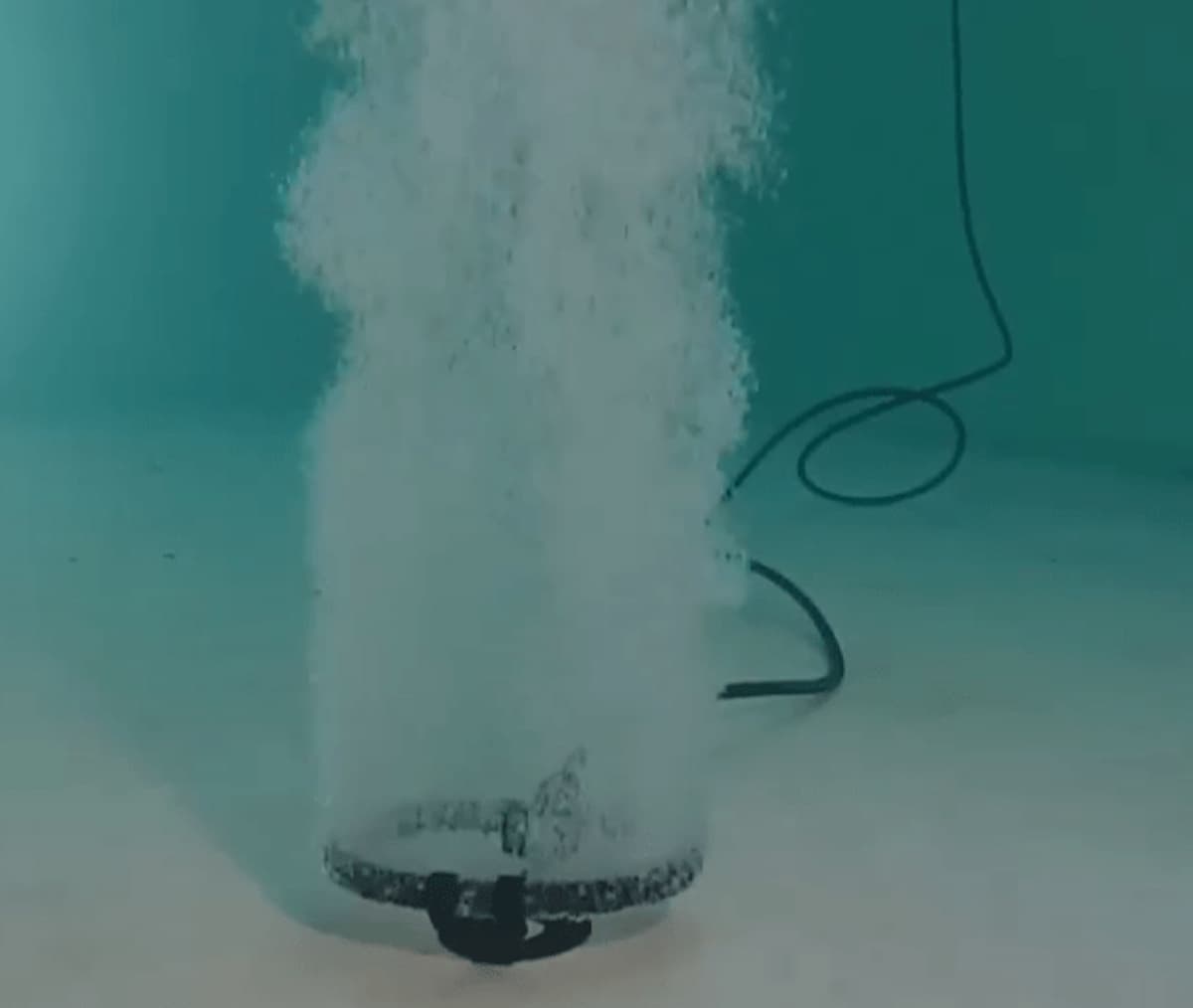Efficacité de l'aération
Il existe de nombreux types de méthodes pour introduire l'oxygène à l'eau à travers le processus d'aération. Certains fabricants d'équipements ont testé leurs dispositifs d'aération pour l'efficacité dans des conditions normales. Un test donne le résultat comme taux de transfert d'oxygène standard ou SOTR. L'unité de mesure est de kilogrammes ou de livres d'oxygène par heure de fonctionnement. Une autre mesure est l'efficacité d'aération standard ou SAE, qui est le SOTR divisé par la puissance utilisée. La mesure résultante est de livres d'oxygène par puissance par heure de fonctionnement.
Il est irréaliste de pouvoir prendre le taux standard d'efficacité d'aération et l'appliquer à la plupart de situation d'étang parce qu'il y a beaucoup d'autres consommateurs d'oxygène dans des étangs outre des poissons. Très franchement, ces chiffres devraient être considérés davantage du point de vue de l'efficacité relative de chaque appareil. Il y aura également une certaine supposition instruite et peut-être expérimentation pour comprendre ce qui fonctionne le mieux pour votre application.

Dispositifs d'aération Aération de type fontaine (taux SAE de 1.5-2.5)
These units shall be defined as any device that splashes the water into the air to create an aesthetically pleasing display. There is a wide range of fountains on the market. Some are designed more for display than aeration and some that mix more aeration with the display.
Pros
+ Can have beautiful displays and add beauty to the body of water or pond
+ Some aeration benefit is seen
+ Works fairly well in small ponds that are relatively shallow
+ Very good at venting off unwanted gases
Contre
– Typically will only draw water from the surface to 10′
-Not as efficient at aeration because energy is used to create the display
– Need power near the pond

Aérateurs ou agitateurs de surface (SAE rates of 2.6-3.2)
These units will employ a float, motor, and prop to splash water at the surface. The splashing creates lots of surface area in the water for venting bad gases and allowing oxygen to absorb into the water from the air.
Pros
+ Ideal for smaller ponds
+ Fairly decent oxygen transfer rate
+ Portable and lightweight
+ Inexpensive for the water movement
Contre
– Not as efficient at moving water at depths greater than 10′
– Need power near the pond

Circulateurs/mélangeurs d'eau (SAE estimated rates of 1.5-2.5)
A motor mounted horizontally to create directional flow and mixing. You can position them to point in any direction and angle them to address the areas you have issues with, either surface or bottom.
Pros
+ Excellent for causing water movement
+ Can be used for keeping ice off ponds and preventing winter kills in milder climates
+ Can be mounted at variable water depths and can mix deep water
Contre
-Not as efficient as other devices at Oxygen Transfer
– Need power near the pond

Aération diffuse (SAE rates of 1.0-4.0)
This type of aeration will typically employ either a compressor or blower. A simple way of keep track of what is what is that a blower is high in volume of air produced but cannot pump air very deep. A compressor is low in air volume but can push air much deeper. In deep ponds, a compressor with a diffuser assembly can be very effective at moving the water and transferring oxygen at the air/water interface. The diffuser head is the working component and is what separates the multitude of brands.
Pros
+ Most efficient in deeper ponds
+ No electricity in the water
+ Not much surface movement
+ Can supply air up to 1 mile from power source for remote applications
+ Very economical in larger ponds and lakes
+ Can be used year round for aeration and winterkill prevention
Contre
– Not very portable
– Not as efficient in shallower ponds
Moulins (SAE rate not calculated as they do not use electricity)
Wind powered units will either drive a small compressor that pushes air to a diffuser membrane or will be connected to some type of paddle that enters the water and moves as the wind blows.
Pros
+ No electricity is required so they can be used in remote areas
+ Visually pleasing piece of equipment
Contre
– Will not work in no-wind conditions
– Not portable and installation time makes it necessary that the right installation point is decided the first try
– Will not work when they are needed most in the lazy, hazy days of late summer with little to no wind and overcast skies
– Can “puff” phosphorus into the water column and create an algae bloom due to the on/off nature
Aérateurs solaires (SAE not calculated as they do not use electricity)
The typical system uses solar panels to power a small compressor which feeds air to a diffuser in the bottom of the pond.
Pros
+ No electricity is required so they can be used in remote areas
Contre
– Will not work when the sun is not out unless you have a battery bank
– Very expensive and reliability is based on sun and location
Aérateurs rotatifs (SAE rates of 2.5-4.0)
Paddlewheels are just as they sound, a shaft with blades that is spun by a motor or a PTO from a tractor. As the blades spin, they enter and exit the water and splash the surface. Paddlewheels have come a long way in the past 10 years. Past designs had inherent problems that caused premature wearing of the gear boxes. New designs have better balancing and less wear. A note of caution, most imported motors have a spline shaft that does not match up with American-made motors and can cause repair difficulties.
Pros
+ Most efficient surface aerator
+ Can cause directional flow while aerating
Contre
– Will not be efficient in deeper ponds
– Units are typically bulky and not very portable
Aspirateurs (SAE of 1.8-2.3)
These units employ an above water level motor, extended shaft, propeller, and draft tube to suck in air. They can be adjusted to point the propeller in several angles.
Pros
+ Cause directional flow to address dead spots
+ The ability to angle the prop into the water makes these units more effective at moving water in deeper ponds
Contre
– Oxygen transfer is not quite as good as other devices
– Some units have premature failure in the area of the extended shaft
Pompage ou cascade d'eau (SAE rates vary)
This method is designed after Mother Nature. If water has to be pumped into a pond or body of water, you might as well splash it to take advantage of the oxygen transfer from the air/water contact.
Pros
+ Free aeration
+ Natural look to the pond or body of water